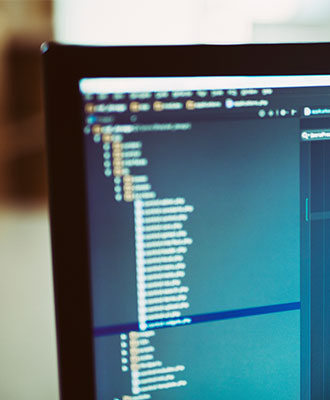The Kaizen Method: What It Is and How It Could Benefit Your Company
The Kaizen method, originally a Japanese management concept, is based on continuous improvement. Japanese companies such as Toyota have been using it for decades to make improvements to their assembly line, supply chain, and other business processes.
It is a strategy that involves all employees working together proactively – regardless of level in the company. The aim is to achieve regular and incremental improvements to the manufacturing process. This approach essentially combines everyone’s talents to create a means for improvement.
The Kaizen methodology is both a philosophy and a plan for action. As the Kaizen philosophy, the focus is on building a company culture that actively engages all employees. They not only suggest, but also implement improvements to the company. In lean companies, it eventually becomes a natural way of thinking for all the staff. As an action plan, the Kaizen Method is about organizing events that are focused on improving specific areas within the organization. These events should involve employees at all levels, especially anyone on the plant floor.
“Kaizen is an essential part of lean manufacturing. It eliminates waste, reduces defects, increases productivity, promotes innovation, and encourages worker accountability.”
The Foundation of the Kaizen Method
Kaizen is two Japanese words. It translates to change (kai) to become good (zen). To accomplish this, it’s built on the following five elements:
- Teamwork
- Personal Discipline
- Improved Morale
- Quality Circles
- Suggestions for Improvement
From this foundation, three factors arise:
- Elimination of waste (muda) and inefficiency
- The Five-S Framework for good housekeeping
- Seiri – tidiness/organization: Separate necessary workplace items from unnecessary ones and remove unnecessary items.
- Seiton – orderliness: Arrange everything so that it is easily accessible, in the way that makes the most sense for the work being done.
- Seiso – cleanliness: Keep all workspace areas clean.
- Seiketsu – standardized clean-up: Create a system for cleaning and implemented best practices.
- Shitsuke – discipline: Keep all the effort going forward.
- Standardization
Principles of Kaizen
- Let go of assumptions
- Remain proactive about problem-solving
- Do not accept the status quo.
- Let go of perfectionism
- As you find mistakes, look for solutions
- Build an environment where everyone feels like they can contribute
- Do not accept obvious issues – ask why five times to get to the root cause of the issue.
- Gather information and opinions from many different people.
- Be creative and look for low-cost solutions and small improvements.
- Never stop making improvements.
Kaizen and Standardized Work
Standardized Work focuses on the current best practices for a process, while Kaizen seeks to find improvements for those processes. Standardized work is a living document as it continues to evolves because of Kaizen. Kaizen uses several tools such as value stream mapping and total quality control.
Advantages and Disadvantages of the Kaizen Method
Advantages
- Brings a sense of value and purposefulness to employees, which helps boost morale.
- Creates a gentler approach to change
- Scrutinizing processes helps to reduce mistakes and waste
- Bolsters teamwork
- Puts systems in place for improvements in the short and long term
Disadvantages
- Short-term Kaizen events may lead to a shallow and short-lived burst of excitement that may be abandoned
- Companies with a culture of closed communication and territorialism need to focus on culture changes before something like Kaizen would be well-received.
How Kaizen Could Benefit Your Business
For the majority of companies, there is a constant effort to reduce waste while also increasing quality. Kaizen helps with this but goes much further in terms of the benefits it offers companies that implement it.
Employee Satisfaction
With Kaizen, your focus is on creating a culture focused on teamwork and change, where everyone is encouraged to share their ideas. Team members are asked to make suggestions for improvement and ultimately when they see their suggestions being taken seriously, they’ll be happier in their jobs.
Resource Utilization
Kaizen focuses on improving products through better utilization of your current resources (your staff) to achieve small improvements on a continuous basis. By making small changes on a regular basis, you don’t have to worry about massive change or expensive investments to get the improvements you’re looking for.
Safety Improvements
As new improvements are made within the business and its processes, safety improvements are a natural extension. When new ideas to clean up and organize work areas are implemented, safety is improved.
Increased Efficiency
Following Kaizen principles ensures you’ll create well-planned work areas and get rid of any operations or movement that aren’t necessary. It also ensures employees receive adequate training so that everything runs as smoothly as possible.
Everyone is part of the improvement process and implementation effort. There is no reliance on making huge changes at once or large amounts of capital. Ultimately, taking a series of small steps is not only more affordable and easier for the employees, but can add up to major changes and improvements in quality, efficiency, safety, and productivity that produce a positive impact on the company’s profit margins.
Implementing Kaizen in Your Workplace
When people think about implementing Kaizen, there is the Kaizen Event, which is a short term focused activity that focuses on a single process or a single department. Daily, which may also be referred to as Kaizen Blitz and event centered events are part of Kaizen, but the core isn’t focused on a single event, but rather the philosophy of making continuous improvement toward your company’s ideal state.
Daily Kaizen
The Daily Kaizen approach requires the team to meet on a regular basis, whether that’s daily or weekly. During those meetings, potential solutions for any issues since the last meeting, along with suggestions for improvement should be discussed. Each team member needs to participate. If possible, hold the meetings in the place where the process is taking place. Doing so is known as Gemba in the concept of Kaizen.
Kaizen Events
The Kaizen Event lasts a few days or a week. It is a team-based rapid improvement activity, so there is a clear start and stop point. Events require additional planning, with the goal of implementing a more substantial change or implementing the change over a period of a few days or weeks.
Typically, a Kaizen event goes through five stages:
- Set goals and provide background information.
- Review the current state and create a plan for improvement.
- Improvement implementation
- Review and fix what doesn’t work.
- Report results and determine follow-up items
Whether you choose the daily or event approach, you have to start somewhere. It’s best to conduct process reviews to help you identify possible opportunities for improvement.
Map the process. Gather any documentation you may have on hand, such as a process map/flow chart, work instruction, or control plans. If there isn’t a process map, build one. Make sure you have a strong understanding of the current process. Without that understanding, you won’t be able to improve it. You can use the Process Failure and Effects Analysis (PFMEA) to help you find opportunities.
Review the process. Evaluate each task or step. Ask:
- Why the step is being performed
- What work is being done and what value is being added?
- When is the process being completed? When should it be completed?
- Who is doing the work? Who should be doing the work?
- How is the work being done? How should it be done?
- How often is the process step done? How often does it need to be done?
Repeat this process for each step until you’ve covered everything. The process review will help you to:
- Eliminate unnecessary steps and tasks from the process
- Combine steps where possible by identifying the steps that have to be performed discretely and those that can be completed in parallel
- Rearrange the sequence of steps to reduce waste in terms of time and effort
- Simplify the process. Use the 5S process where possible
- Validate good changes.
Regardless of the Kaizen method you choose, use the PDCA Cycle to implement continuous improvement. Plan, Do, Check, and Act. With this approach, there is a scientific approach to making improvements.
- Plan – Develop a hypothesis
- Do – Conduct an experiment
- Check – Evaluate your results
- Act – Refine as necessary and start a new cycle
It takes time to implement Kaizen and build a continuous process improvement mindset within your company. The first step is to take the time to educate your company. This means providing them with the appropriate training, tools, and systems to make them successful. Coach your employees to make sure they become aware of issues and look for ways to improve every day.
Through the training and initial review process, team members will more than likely start to take ownership of their individual processes. It’s when this process takes place that the workers start to consider making improvements as part of their responsibility. The more positive changes that take place, the more successfully the Kaizen process will be in the future.
PurchaseControl can fit right in with the Kaizen method and help improve processes
Find Out How








